Chessboard Calibration
Chessboard calibration is performed in order to determine the position and orientation of all cameras in the system in 3D space using a recorded chessboard calibration trials. See Recording Extrinsic Chessboard Calibrations for detailed instructions for recording chessboard calibration trials. More information about extrinsic calibration can be found here.
Chessboard calibration is the primary recommended calibration method when using a camera system that does not offer a direct third-party calibration (e.g. wand calibration).
Load Videos
Load video files (.mp4 or .avi) containing the chessboard calibration trial. To load the videos, browse to and select the folder containing the videos. The structure of this folder must conform to the format described in Video Data.
Frame Grab Step
The step between frames searched for chessboards. Smaller values take longer to process, but may provide slightly improved calibration results compared to larger values.
Camera Type
Detects and indicates the camera manufacturer based on the videos loaded. This allows the automatic application of default Sony RX0 II camera intrinsic parameters when the calibration videos were recorded using this camera system (see below).
Use Default RX0 II Intrinsics
Automatically selected after loading videos recorded using a Sony RX0 II camera system. This option should be selected to utilize the built-in intrinsic parameters for the Sony RX0 II cameras. Note: These parameters are only valid for Sony RX0 II cameras with standard lenses. For any other cameras or lenses these default parameters are invalid.
Load Custom Intrinsics
Loads intrinsic lens parameters for the camera views loaded.
Origin Frame
Frame to use to set the global coordinate system of the capture volume. If the chessboard is not detected in at least three views in this frame, the closest frame in which it can be detected will be used.
Min 2 Cams for Origin Triangulation
Uses two (instead of the default of three) cameras to locate the origin frame. Use this option if the board is difficult to see in the triangulation frame from three cameras.
Normal Axis
Set the coordinate system axis that is defined by the normal axis of the chessboard.
Long Axis
Set the coordinate system axis that is defined by the long axis of the chessboard.
Use Custom Chessboard
Use a custom size chessboard for the calibration. Only select this option if not using the chessboard provided by Theia Markerless.

Square Size: The width and height of each square on the chessboard. Measured in mm.
Number of Squares High: The number of inner squares in the vertical direction of the chessboard.
Number of Squares Wide: The number of inner squares in the horizontal direction of the chessboard.
Calibrate Cameras
Perform the extrinsic calibration for all of the cameras.
Chessboard Calibration Metrics
After the camera calibration is complete, a dialog will appear with the results of the chessboard calibration trial. The result metrics can be interpreted as follows:

Frames
The number of video frames used to calibrate each camera.
RMSE Reprojection
RMSE error of the reprojected 3D chessboard points relative to the detected chessboard points in 2D, for each camera view. Measured in mm. Since this is an error relative to 0 mm for all chessboards regardless of size, a 1 mm RMSE reprojection has the same meaning for all sizes of chessboard.
RMSE Diagonal
RMSE error of the length of the diagonals of the 4 outer corners of the chessboard relative to their known lengths, for all triangulated chessboard detections. Measured in mm. Provides an absolute error measure, not normalized to the size of the chessboard. Therefore, a 1 mm RMSE diagonal for a large board is a smaller percentage error than a 1 mm RMSE diagonal for a small board. Not affected by the number or size of the chessboard squares. Recommend using <1 mm as ‘Excellent’ and <2 mm as ‘Acceptable’; calibrations with RMSE Diagonal above 2 mm are not recommended for use.
RMSE Angle
RMSE error of the angle of the 4 outer corners of the chessboard relative to their known angle of 90 degrees, for all triangulated chessboard detections. Measured in degrees. Since this is an error relative to 90 degrees for all chessboards regardless of size, a 1 degree RMSE angle has the same meaning for all sizes of chessboard. Not affected by the number or size of the chessboard squares.
RMSE Flat
RMSE error of the normal distance from each detected chessboard point in 3D to the flat plane formed by the outer four 3D chessboard points. Measured in mm. Provides an absolute error measure, not normalized to the size of the chessboard. Therefore, a 1 mm RMSE flat for a large board indicates a lesser degree of bend in the chessboard than a 1 mm RMSE flat for a small board.
Origin Triangulation Frame
The video frame used to initialize the position and orientation of the global coordinate system.
After reviewing the calibrations results, the folling options are available:
Save allows the calibration to be saved.
Save & Assign initiates two steps:
Opens the Save Calibration window, allowing the calibration to be saved as a .txt file.
Opens the Assign Calibration tool, allowing the previously saved calibration .txt file to be immediately assigned to movement trials.
Ok acknowledges and closes the results dialog window.
Chessboard Calibration Review
After the camera calibration is complete, the calibration trial videos can be reviewed for feedback. The following visual cues projected onto the camera views can be useful in determining which portions of the trial contributed to the calibration, and those that did not. This can be useful for optimizing your calibration trial technique. During the chessboard calibration process, areas where the board was waved with good visibility and successfully tracked are reflected in the 3D view with th epoint visualization. This visualization can be used to visually imspect volume coverage across the calibrated capture space.

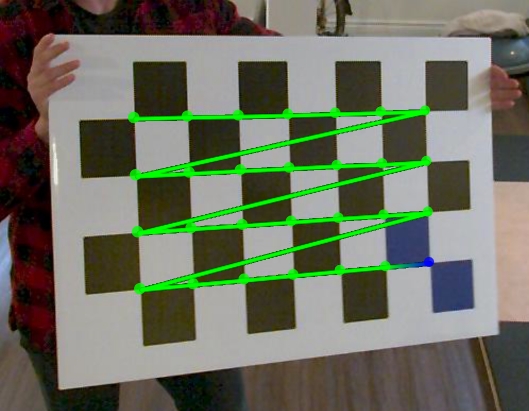
Chessboard was successfully detected in 3 or more views for the current video frame, including this particular camera view.
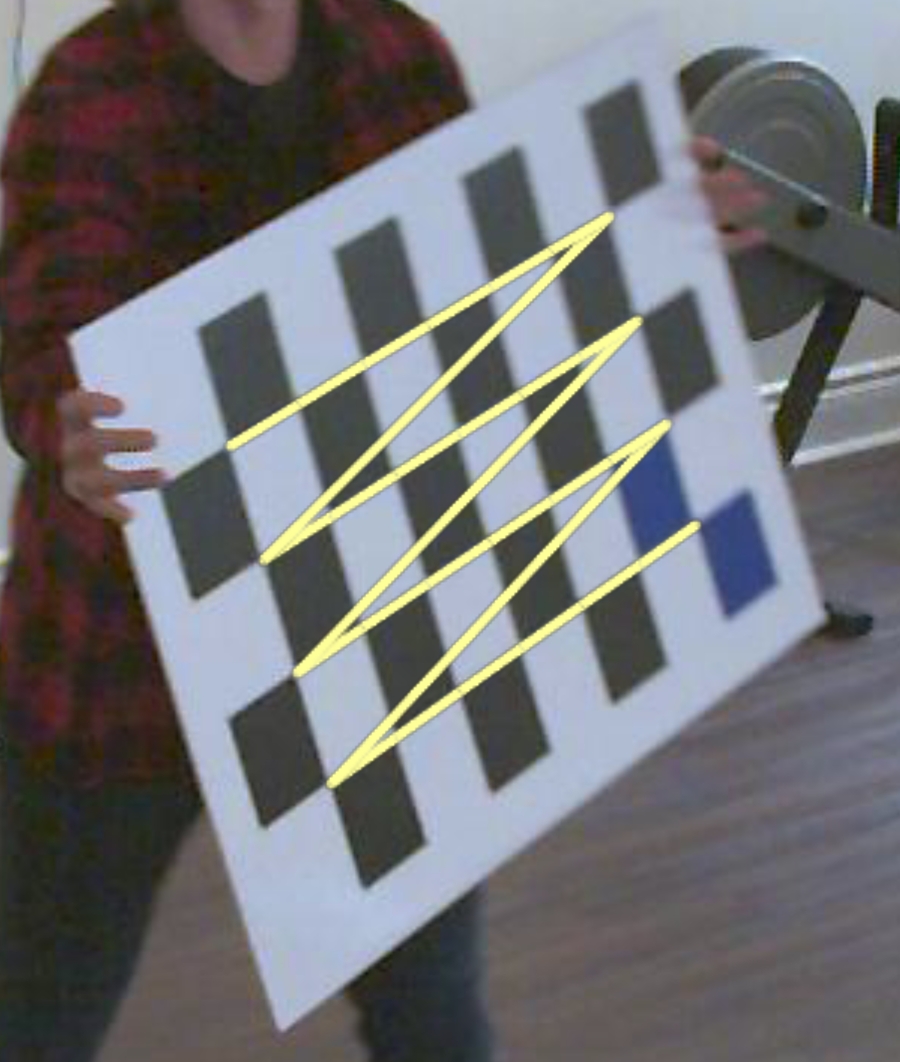
Chessboard was successfully detected in fewer than 3 views for the current video frame, including this particular camera view. This video frame was not used towards the system calibration.
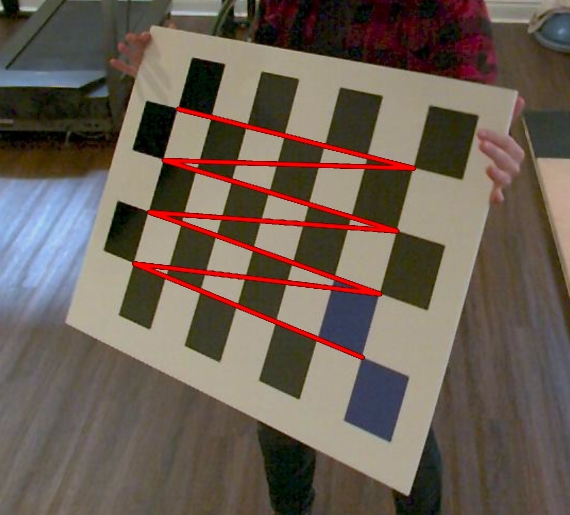
Chessboard was successfully detected in 3 or more views for the current video frame, including this particular camera view, but the reprojection error was too high.
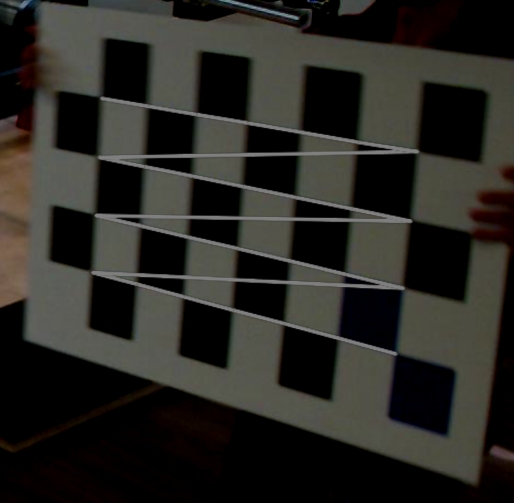
Chessboard was detected, but the blue corner could not be determined in this particular frame from this particular camera view.
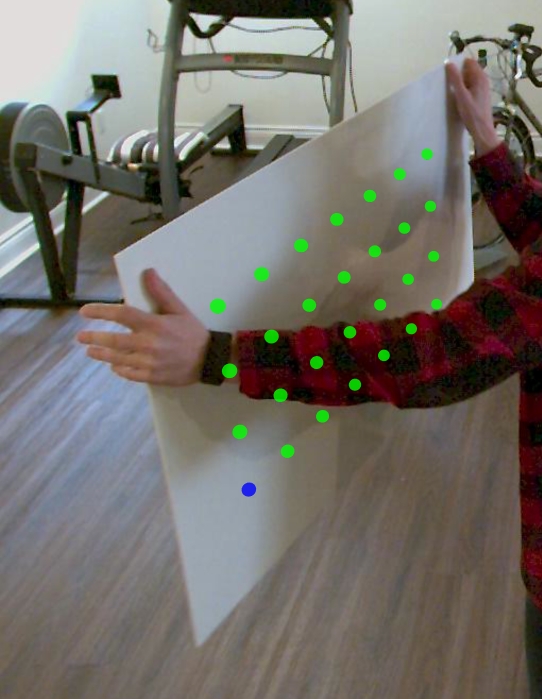
3D chessboard points are reprojected onto all 2D camera views for successful calibration frames, including those in which the chessboard is not visible.
Last updated
Was this helpful?

